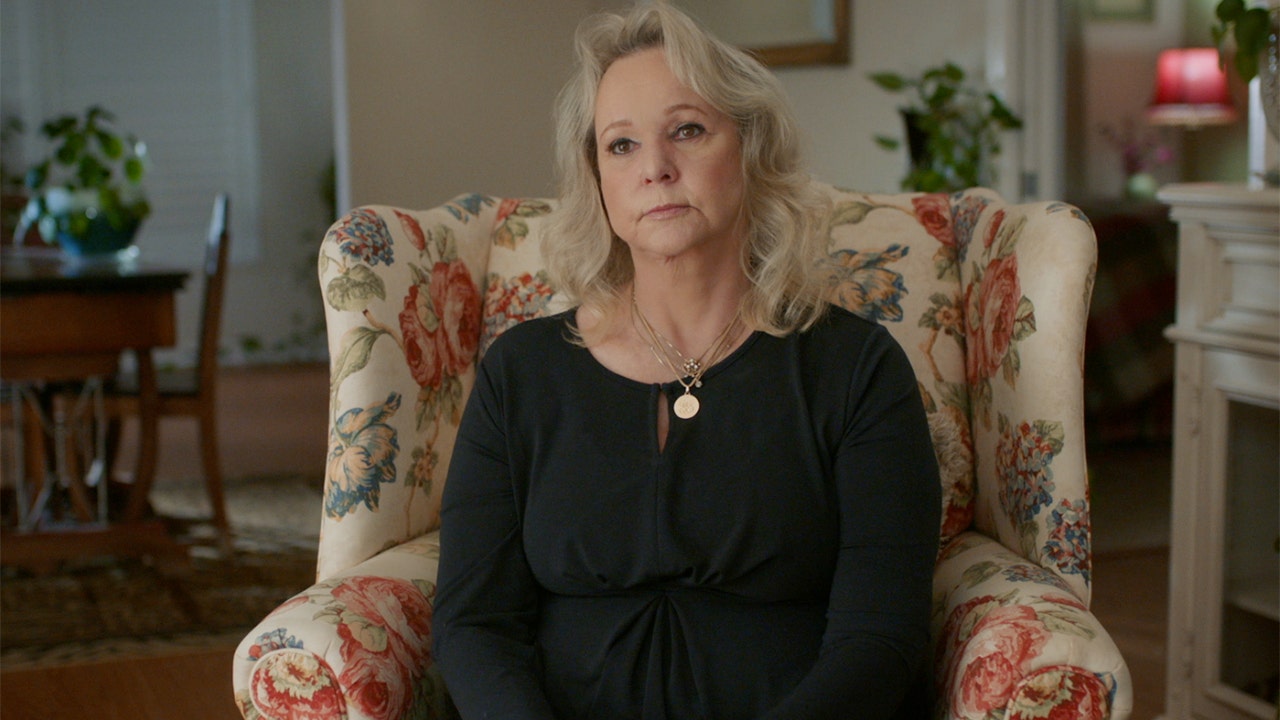Survivors, bishop unite to witness ongoing search for unmarked graves in La Ronge, Sask.
WARNING: This story contains distressing details.
Myles Charles says he was a young boy when he was wrapped in a blanket and rushed outside on the night the Lac La Ronge Indian Residential School burned down.
“They had a head count,” Charles recalled of that winter night in 1947. “I was sick in bed, upstairs in the dormitory, and [an old man] ran up the stairs and took me out to the ground. I’m thankful to [him] for doing that, otherwise I wouldn’t be here talking to you.”
Charles, a painter, is one of several community members who gathered on the former Lac La Ronge Indian Residential School site last Friday, one day after Canada marked its first National Day for Truth and Reconciliation.

They were there to take part in healing ceremonies, share stories about the school and its impacts, and witness first-hand the latest round of searching for unmarked graves on the site.
The cemetery sits at the top of a gentle hill facing Lac La Ronge in the community of the same name, located about 380 kilometres northeast of Saskatoon. Community members and school staff are buried there, according to residents.
“But we also understand there were students that didn’t make it home that are buried here,” said Lac La Ronge Indian Band Chief Tammy Cook-Searson. “We’ve been working to gain more information and understanding.”
While the cemetery has some headstones, rocks and other grave markings, the First Nation has tapped SNC Lavalin to use ground penetrating radar to help better account for how many people may be buried there. The work is ongoing. One area inside the cemetery, believed to host a mass grave, has yet to be scanned, Cook-Searson said.
The National Centre for Truth and Reconciliation estimates, based on death records, at least 4,100 children died at residential schools across Canada, and that many were likely buried in unmarked and untended graves at schools or school-related cemeteries.
The true number is likely much higher. Murray Sinclair, the former chair of the Truth and Reconciliation Commission, has said as many as 25,000 children may have died at the schools.
Operated by the Anglican Church of Canada, the Lac La Ronge school opened in 1907, burned down in 1920 and was replaced with a new school also known as All Saints.
“The new building was poorly constructed, cold in winter and overcrowded,” according to the National Centre for Truth and Reconciliation. “Parents were also unhappy with the way the school was run.”

A July 1937 inspection found students were being fed “only … Irish bread and lard, oatmeal in the mornings and a little peanut butter once a week,” according to research conducted by the University of Regina. Children who were sick with tuberculosis bunked with healthy students in the same dormitory.
The school closed for good after the 1947 fire. Students were either moved to the Gordon’s Indian Residential School near Punnichy, Sask., or the residential school in Prince Albert, where a former military barracks was converted into a residential school, according to the national centre.
Cook-Searson was there on Friday to greet participants at the Lac La Ronge school site. The guests included Bishop Michael Hawkins, who oversees the Anglican Diocese of Saskatchewan. Cook-Searson invited Hawkins to the site since many community members still practice the Anglican faith, she said. The local Anglican church is just across the street.
“I come with some apprehension because there is definitely some anger across the country, some righteous anger, some justified anger, not that it needs to be justified, so I’m trying to be sensitive to that,” Hawkins said of recent discoveries of unmarked graves associated with former residential school sites.
“The [Lac La Ronge] school, certainly the church, played a part in the dreadful legacy of the residential schools, but I [feel] welcomed and I come with an apology for the harm that people have suffered here.”
Hawkins read out the names of known Lac La Ronge students and said a blessing for those buried in the cemetery, before touring the grounds alongside elders. He was approached by a family that hopes to find the final resting place of a loved one they believe attended the school, he said.
I’m in La Ronge, where today the bishop overseeing the Anglican Diocese of <a href=”https://twitter.com/hashtag/Saskatchewan?src=hash&ref_src=twsrc%5Etfw”>#Saskatchewan</a> joined Lac La Ronge Indian Band Chief Tammy Cook-Searson and community members for the latest stretch of searching for unmarked graves at a former residential school site. <a href=”https://t.co/bv8ffEvNvF”>pic.twitter.com/bv8ffEvNvF</a>
—@gqinsk
While the church shared residential school records with the Truth and Reconciliation Commission of Canada [TRC], “they were such a massive amount of records that I don’t think they finally processed them all. It’s an enormous job,” Hawkins said.
“So we are actually looking now at all the records we have related to this residential school, to make sure that we know exactly what we have. I’ll look up any names for anybody that has questions about students who may have died or attended residential school and share what we have.”
At the bottom of the hill, two band members-turned local historians, John Irving and Teron Roberts, presided over a tent featuring photos, documents and models of the residential school.
Roberts’ great grandmother and grandmother attended the original school, he said.
“They were taught how to sew, how to make clothing,” he said. “They were giving them an education, I guess you could say, but discipline was [meted] out.”
Roberts said he would ultimately like to see some kind of memorial installed at the site.
“Elders and local people have been coming and giving us names and saying, ‘This is where my grandmother is buried,'” Roberts said. “Every time we have a gathering like this, we get more new information.”
Frances Charles was among the elders walking the site with Bishop Hawkins. She was born in 1947, when the second school building burned down. While several of her older siblings went to the school, the family doesn’t know where all of them were buried.
Frances’ eldest sister, Jean, “would tell me that most of the time she’d be working in the garden or in the kitchen. She didn’t tell me anything about anybody being mean to her,” Frances said.
Walking the site on Friday made Frances feel “so sad,” she said, “just thinking of the kids who never made it home.”

Frances didn’t attend a day school until she was nine because her parents wouldn’t let her go, she said.
“I didn’t go to school until the Indian agent came….and they told my mom, ‘If you don’t let my [her] go to school, you and [her] dad will be going to jail.”
Cook-Searson is a third-generation survivor of residential schools. Her grandparents attended Lac La Ronge Indian Residential School, while she and her parents went to a residential school in Prince Albert. She was seven years old.
“The first thing that happened to me was I got my hair cut and I wasn’t allowed to speak Cree,” Cook-Searson said of her lonely experience. “I wouldn’t even throw candy wrappers away because it was something that my parents touched, because it was just that connection.”
Cook-Searson said she’s grateful to have remained fluent in Cree and maintain her traditional way of life, but that it’s been a long journey. The inter-generational trauma created by the residential school experience is still felt in the community, she said.
While some survivors have felt safe to speak out ever since the 2005 Indian Residential School Settle Agreement, it remains difficult for others.
“Finding our voice is so important,” she said.
Support is available for anyone affected by their experience at residential schools, and those who are triggered by the latest reports.
A national Indian Residential School Crisis Line has been set up to provide support for former students and those affected. People can access emotional and crisis referral services by calling the 24-hour national crisis line: 1-866-925-4419.
Do you have information about unmarked graves, children who never came home or residential school staff and operations? Email your tips to CBC’s new Indigenous-led team investigating residential schools: [email protected].



